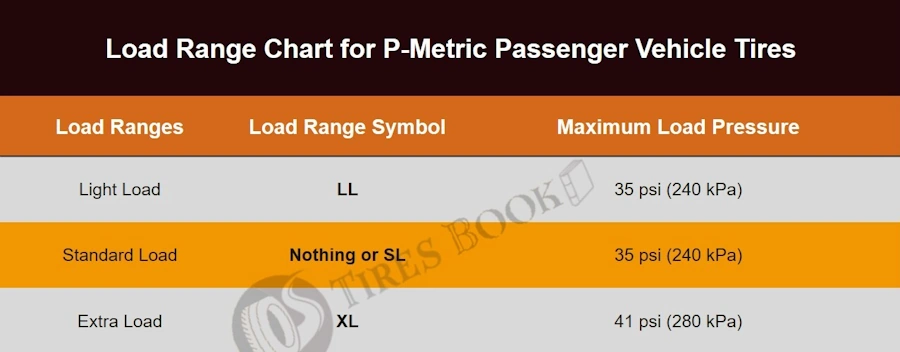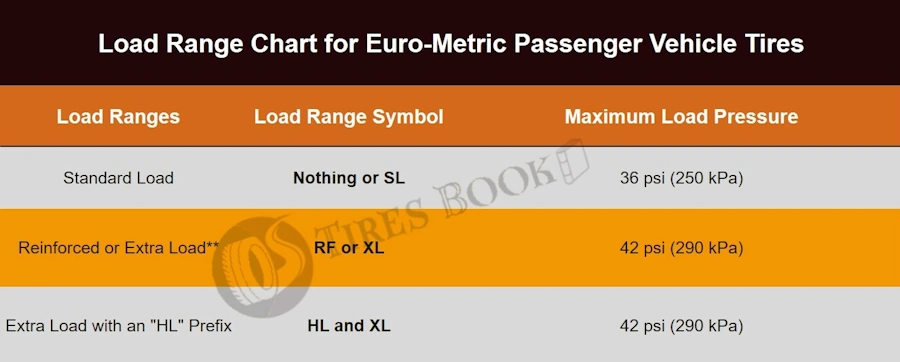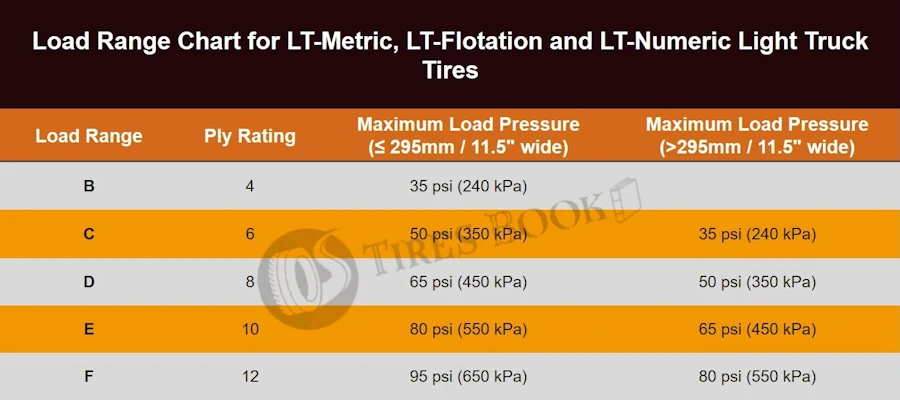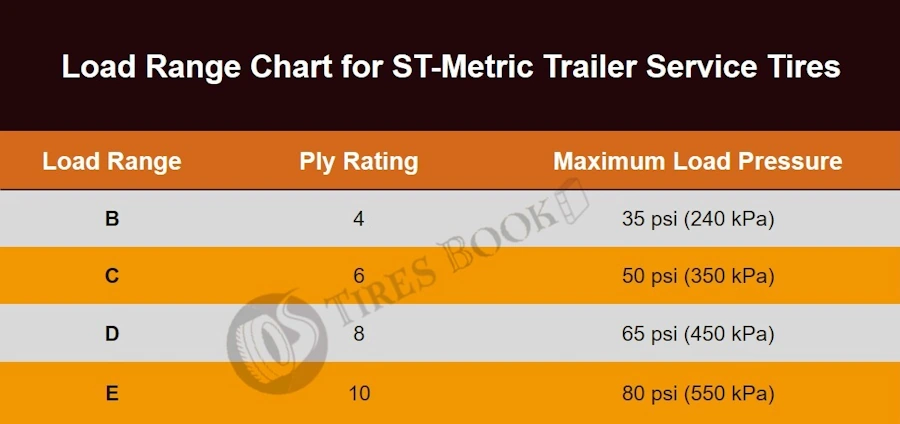What Is Load Range In Tires?
Load Range in tires refers to the tire’s durability at its maximum air pressure. It is similar to ply rating but does not directly tell the number of plies used in construction.
The load ranges are arranged alphabetically, starting with the letter “A”. It represents the maximum weight a tire can safely support when properly inflated, directly indicating the tire’s load-carrying capacity. Each alphabet also indirectly indicates the number of plies used in the tire.
Load range is an essential factor for vehicle safety, as using a tire with an inappropriate load range can lead to premature tire wear, decreased fuel efficiency, and even dangerous blowouts.
How to Read Tire Load Range?
The Load Range of a tire is usually represented as a letter on the tire’s sidewall (e.g., 205/75 R14 / E). The letter E at the end is the load range. The letter indicates how much weight and air pressure the tire can handle, with higher letters in the range (A → G) indicating a greater load capacity.
To properly read the load range, you need to consult the load range chart to decode the actual meaning of this letter.
Tire Load Range Charts
Below are load range charts for P-Metric, Euro-Metric, LT-Metric, and ST-metric vehicle tires.
1. Load Range Chart for p-Metric Passenger Tires
A load range chart for p-metric passenger tires provides crucial information about the maximum weight capacity that passenger tires can safely support.

2. Load Range Chart for Euro-Metric Passenger Tires
The load range chart for Euro-Metric passenger tires is a vital tool that indicates the maximum load capacity of each tire, tailored to European standards. This chart guides users in selecting appropriate tires for their vehicle, factoring in the weight and usage requirements.

3. Load Range Chart for Light Truck Tires
The load range chart for light truck tires provides essential information on the maximum load capacity each tire can handle, specific to light trucks. It’s a key resource for ensuring that truck owners select tires that can safely support the vehicle’s weight and cargo.

4. Load Range Chart for ST-Metric Trailer Tires
The load range chart for ST-Metric trailer tires presents vital data on the maximum load each tire can support, specifically designed for trailer applications.

Load Range and Ply Rating
Tire load range and ply rating are interrelated, with each tire rating having a specific load and driving capacity. Ply rating refers to the internal structure and load durability of the tire, traditionally determined by the number of fabric layers used in the tire.
Modern tires do not have the actual number of plies indicated by the ply rating. Instead, the load range indicates the maximum load durability of a tire, which depends on its size and inflation pressure. For example, in the above chart, a load range of B has a ply rating of 4. It means that the tire with load range B has a durability of 4 plies.
Load Range vs Load Index: The Difference
The Load Range of a tire refers to the thickness and strength of the tire’s sidewall, affecting its pressure handling. It is measured using letters indicating the ply rating or the number of layers, such as C, D, or E.
Conversely, the Load Index measures the maximum weight that a tire can carry at a specified pressure level, represented by numerical values from 0 to 150. A higher numeric value signifies a greater weight-carrying capability for the tire.
While both the load range and load index indicate how much weight a tire can carry, they don’t necessarily indicate how durable or long-lasting the tire will be. Other factors such as treadwear ratings and speed ratings also matter when selecting tires.
What Does SL Mean on a Tire?
“SL” on a tire indicates “Standard Load.” It designates the tire for typical load-carrying capacities at standard inflation pressures.
What Does XL Mean On a Tire?
“XL” on a tire stands for “Extra Load“. This signifies that the tire can handle higher load capacities compared to standard load tires. This is due to its reinforced structure and higher inflation pressure capacity.
